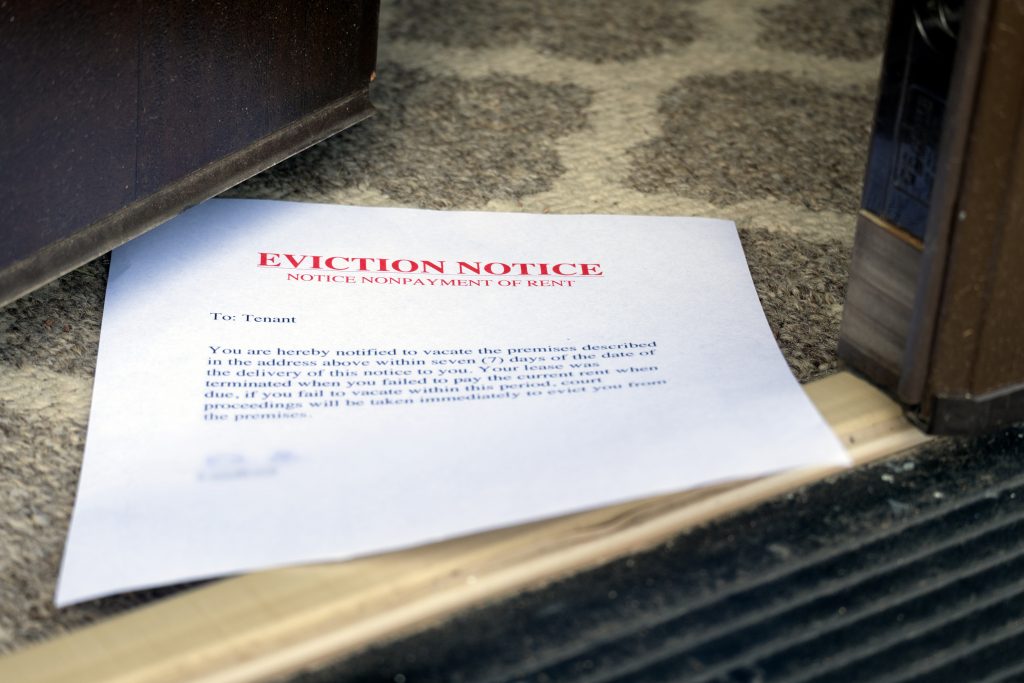In today’s article, we’re going to cover the legal knowledge you need to know when it comes to the rules around eviction notices in the UK.
This includes how landlords can evict tenants when they have the right to do so, how tenants can protect themselves, and finally, the legal procedures that landlords must conform to when evicting tenants.
Are you a tenant with a landlord trying to evict you, even though you don’t think they are entitled to? Or, are you a landlord with a problem tenant that you want to evict? Keep reading to find out more about the eviction rules.
In the UK, landlords generally need to evict a tenant by using either a Section 21, Section 8 notice, or both.
If a tenant has breached the terms of a tenancy, their landlord can use a Section 8 notice. Otherwise, the Section 21 notice (also known as no-fault eviction) is generally required to evict without fault.

What are the two main types of eviction notices?
Section 8 notice
Section 8 is usually fairly simple and straightforward. In order to give your tenants a Section 8 notice, you must fill in what is called a “notice seeking possession of a property let on an assured tenancy or an assured agricultural occupancy”. You must be specific when filling out this form about which terms of the tenancy your tenants have broken.
Depending on which terms the tenants have broken, you can give them between 2 weeks’ and 2 months’ notice. You will not be able to evict a tenant immediately.
Sometimes it can be better to try and resolve any disputes with your tenant instead. If they have rent arrears, this can involve trying to set up a rent repayment plan or having an open dialogue with your tenant about managing rent arrears.
Section 21 notice
Now let’s talk about the Section 21 notice, colloquially known as a no-fault eviction.
Situations where a landlord can use Section 21 notice to evict a tenant include:
1. At the end of the fixed term of the rental contract, if you have a written contract.
2. In the absence of a fixed end date for the duration of the lease, this is known as a periodic tenancy.
Before issuing a Section 21 notice, the landlord must provide the following information to the tenant:
1. An energy Performance Certificate (EPC) in relation to the property.
2. A guide on ‘how to rent’ from the UK government.
3. If the property has natural gas installed, an up-to-date natural gas safety certificate is required.
Tenants might worry about the risk of being evicted from their homes, however it should be remembered that tenants have certain protection from Section 21 notices.
What protections do tenants have when it comes to a Section 21 notice?
Your landlord can’t legally use a Section 21 notice to evict if:
1. The lease contract started less than 4 months ago, or the fixed term has not expired, unless the contract contains a clause that allows for early termination of the lease.
2. The property is classified as a house in multiple occupation (HMO) but does not have an HMO license issued by the local government.
3. The lease commenced after April 2007, but the landlord did not put the tenant’s deposit into the security deposit protection scheme.
4. For leases commencing after October 2015, the landlord did not use a 6a Form or a letter containing the same information.
5. The local council has issued an improvement notice to the property in the past 6 months.
6. The local council has issued a notice in the last 6 months stating that emergency repairs are to be made to the property.
7. The landlord has not returned the illegal fees or deposits.
As long as one of the situations we just described happens, the landlord cannot use the Section 21 notice to evict the tenant.
What happens once the landlord issues a Section 21 notice?
But what happens once the landlord issues a Section 21 notice? Furthermore, how much notice is required, and what if the tenant insists on not leaving?
First of all, the length of the notice period depends on the nature of the breach of the terms of the lease. Generally, the notice period is at least two months, but if you have a fixed-term rental contract, the notice period must be the same as the lease period. For example, if the fixed period is a year, the notice period must also be a year.
If the tenant refuses to leave, the landlord can apply to the court for a compulsory possession order.
In deciding whether to grant mandatory grounds for possession, the court will take into account different circumstances. For example, if the landlord needs to take possession of the house because it was once used as a primary residence, or now plans to use it as a primary residence, then this reason is usually accepted.
There are other reasons which may be accepted by the court. These include: if the property is subject to a mortgage, or if the lease is less than 8 months and was previously a holiday let, etc. Keep in mind, however, that the court will also consider circumstances at its discretion, such as rental arrears or destruction of the property. These may also be grounds for granting possession.
For eviction enquiries, contact our property law team today.
Have questions? Get in touch today!
Call us on 020 7928 0276, phone calls are operating as usual and will be taking calls from 9:30am to 6:00pm.
Email us on info@lisaslaw.co.uk.
Use the Ask Lisa function on our website. Simply enter your details and leave a message, we will get right back to you: https://lisaslaw.co.uk/ask-question/
For more updates, follow us on our social media platforms! You can find them all on our Linktree right here.



